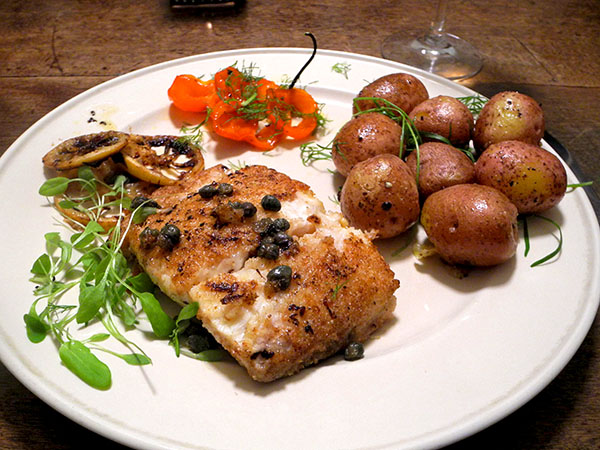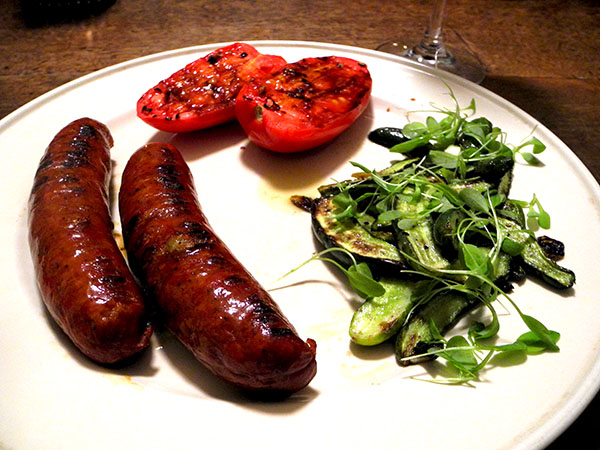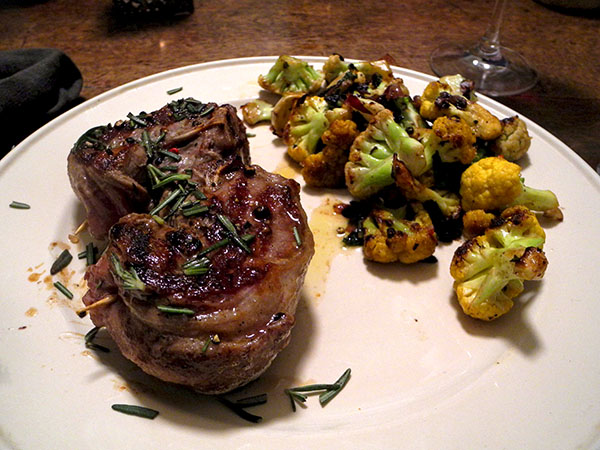
Swordfish belly.
It was beautiful, lying inside a tub on the ice. I had almost no idea what it was, or at least I didn’t know what if would taste like, or how I should cook it, but when I saw it at the fisherman’s stand in Union Square on Monday I wasn’t going to pass up a chance to find out.
I immediately began to look everywhere on line, but I found almost nothing, which really surprised me. Most of what I did come across, and almost all of the images, was connected to the doings of high-end chefs and restaurants (as in, dainty and very pretty little appetizers). One writer wrote that he or she had decided to try it because, well, pork belly, and tuna belly, both of which had become quite a thing in recent years, so why not swordfish belly?
Indeed.
I did do a paper search as well, but there was absolutely nothing in any of my own files or cookbooks on the subject.
By that time I had gathered that at least I wasn’t coming in at the tail end of a new food fad.
I did manage to put together a recipe myself, informed a little by what I had seen, and entirely from ingredients I had on hand. The basic idea was to arrange some good flavors, and to avoid masking the subtlety of that which I expected from the swordfish itself.
The steak was delicious. We were fortunate to be able to share it and its juices with 2 very congenial vegetables and their own juices. That usually calls for a good crusty bread, and I had one ready.


- one swordfish belly steak (13 ounces) from P.E. & D.D. Seafood, brought to room temperature, skinned (although I’m not sure that it would have been inedible, as it is with regular swordfish steaks), cut into 1½ to 2-inch-wide sections that were not too thick (say, less than one inch), briefly seared, 30 seconds on the first side, 15 on the second, inside a totally dry (no oil or butter) enameled cast iron pan which had been pre-heated above a high flame until very it was very hot, the fish removed and arranged on the plates, the heat under the pan turned down a bit and one chopped fresh habanada pepper and 6 or 8 pitted and halved black oil-cured olives from Buon Italia pushed around inside of it until they had warmed, these then arranged on the swordfish, everything seasoned with Maldon salt and drizzled with a little organic lemon from Trader Joe’s, finished with a garnish of micro fennel from Windfall Farm
- one very-thinly-sliced medium shallot from Norwich Meadows Farm heated in 2 tablespoons of olive oil inside a heavy, high-sided tin-lined copper pan until softened, then one broadly/roughly-chopped Radicchio Variegato di Castelfranco from Campo Rosso Farm introduced into the pan, some salt and pepper added, the chicory stirred until it had barely wilted, finished with a small splash of balsamic vinegar and arranged on the plates
- two bright heirloom tomatoes from Berried Treasures Farm, sliced, gently heated inside a smaller tin-lined copper pan, seasoned with sea salt and freshly-ground black pepper, some chopped oregano from Keith’s Farm stirred in, arranged on the plates, sprinkled with more oregano, and drizzled with a little olive oil
- slices of a Bien Cuit ‘Campagne’ traditional sour dough from Foragers Market
- the wine was an Italian (Campania) white, Feudi di San Gregorio Falanghina 2015, from Garnet Wines
- the music was Vivaldi’s 1723 opera, ‘Ercole’, Fabio Biondi directing the ensemble, Europa Galante




